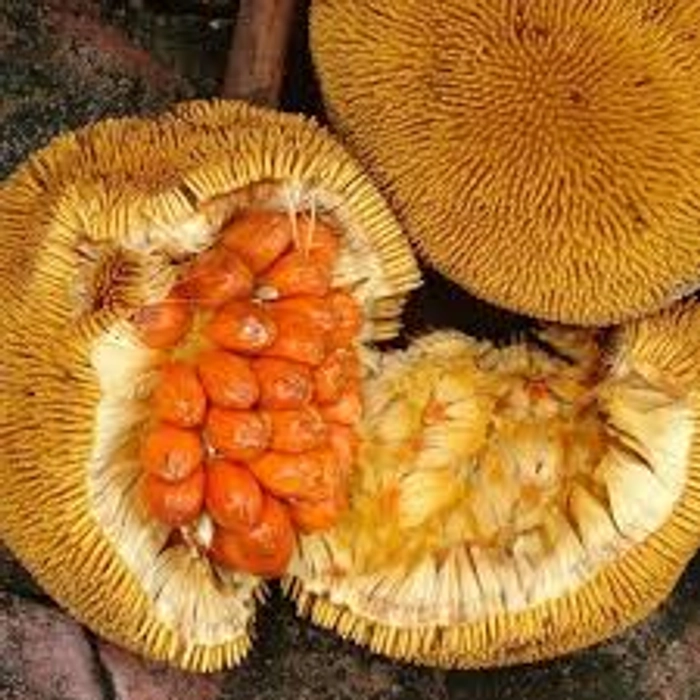Keledang Fruit Live Plants (Artocarpus Lanceifolius)
Product description
The keledang fruit, scientifically known as Canarium odontophyllum, is a tropical fruit tree native to Southeast Asia, particularly found in countries like Malaysia and Indonesia. It belongs to the same genus as the Canarium indicum, which produces the well-known Pili nut.
Here's a description of keledang fruit live plants:
-
Tree Appearance: Keledang trees are medium-sized evergreen trees that can reach heights of up to 25 meters (82 feet). They have a slender, upright growth habit with a symmetrical crown of glossy green leaves.
-
Leaves: The leaves of keledang trees are pinnate, which means they have multiple leaflets arranged on either side of a central stem. These leaves are dark green and can grow up to 50 cm (20 inches) long.
-
Fruit: The keledang fruit is the highlight of this tree. It is a round or oval drupe that measures about 4-5 cm in diameter. When ripe, the fruit turns from green to yellow or orange and has a smooth, thin skin. The flesh is translucent and jelly-like, with a sweet, tropical flavor. The taste is often described as a combination of lychee and longan.
-
Seed: Each keledang fruit contains a single large seed that is relatively easy to remove from the flesh.
-
Flowers: Keledang trees produce small, inconspicuous flowers in clusters. The flowers are typically greenish-yellow in color.
-
Habitat: Keledang trees are typically found in lowland tropical rainforests, often near riverbanks or swampy areas. They prefer well-drained, fertile soils.
-
Cultivation: Keledang trees can be grown from seeds, but they require a warm and humid tropical climate to thrive. They are sensitive to cold temperatures and are not suitable for cultivation in temperate regions. The tree can take several years to start producing fruit.
-
Uses: The keledang fruit is primarily eaten fresh, but it can also be used in desserts, jams, and beverages. In some regions, the fruit is used in traditional medicine for its potential health benefits.
-
Conservation Status: The keledang tree is not widely cultivated and is primarily found in its native habitat. As with many tropical fruit trees, its conservation status may be a concern due to deforestation and habitat loss.
-
Other Names: Keledang is known by different names in various Southeast Asian languages. For example, it is called "buah keledang" in Malay and "buah keladan" in Indonesian.
Overall, the keledang fruit live plants are valued for their unique and delicious fruit, making them a sought-after tree in tropical regions where they can thrive.
✦
You might like these
✦










